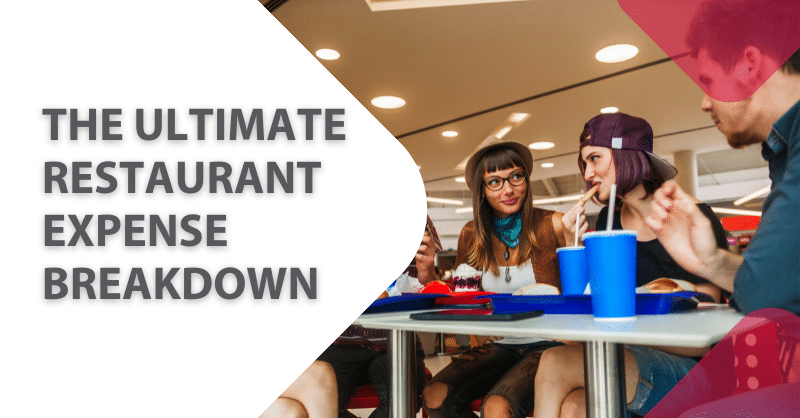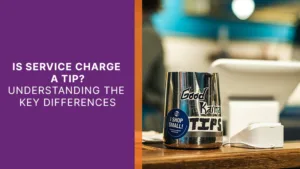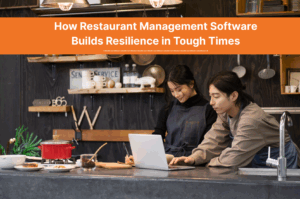Updated on: February 3, 2025
Ever thought of running your own restaurant? While everyone loves the idea of being a part of the community, owning a successful restaurant isn’t as easy as just making delicious food and putting an investment down to get the doors open. You really have to understand how costs such as labor, food, rent, inflation, and even the equipment you use can all add up extremely fast.
Fortunately, you don’t need an accounting degree to successfully run your business and balance the books. It just takes some simple understanding of what the main expenses are, what percentage of profit you should be spending on them, and how you can lower them.
At the end of the day, to keep your restaurant open the amount of operating restaurant monthly expenses must be lower than the operating monthly profits. This ultimate restaurant expense breakdown will help guide you in that pursuit. We’ll be your guide and run you through a checklist of the monthly restaurant expenses you should be aware of to make sure your restaurant remains profitable.
Typical restaurant expenses
The main restaurant costs or restaurant expenses are:
- Food – Your bread and butter. Take into account portion sizes, food quality, food inventory, inventory control, a business license, a food service license, a liquor license, beverage costs, cost of ingredients, takeout containers, to-go sauces, and more. Don’t get intimidated by the volume of costs. Some may present as one-time costs or annual fees.
- Labor – This encompasses everything from hourly wages to employee benefits and health care for salaried employees and payroll taxes. Don’t skimp on proper training, either. It’ll be worth it for quality customer service that may even carry you through labor shortages or other tough times in the food business.
- Equipment – These initial investments can make or break your experience. Follow industry standards and take proper care of kitchen equipment and bar equipment to keep costs under control.
- Rent – Rent or mortgage payments, renovation costs, construction costs, construction mishaps, and property taxes can take a big chunk of your restaurant cost breakdown.
- Utilities – Operating costs such as utilities may vary according to time of year. Consider sustainable business practices to set you on the path to mitigate them as best as you can.
What should you consider when thinking about restaurant expenses?
There’s a lot to consider in a restaurant expense breakdown. Let’s start with the obvious—food.
1. Food
Now just because the food is the highlight of most restaurants, don’t get carried away with how much you spend on it. As a rule of thumb, your restaurant food costs should not be more than 30% of your total food sales. This allows room for the other expenses you’ll incur from typical day-to-day operation.
One thing to keep in mind with your food expenses is that everything in business is negotiable. Many times your food provider may have surpluses of different kinds of ingredients. This means they might be willing to lower the price for the food if you’re willing to take the time to ask.
Ways to control or lower food costs
- Create great relationships with more than one supplier
- Use foods before the expiration date
- Be mindful of seasonal ingredients and their fluctuating prices
Plan your menu items and portion sizes with a balance of artistry and business flair to cut prime costs. Stay on top of your food inventory to avoid waste and to minimize each plate cost.
2. Labor
In addition to the food, your next major restaurant expense will be your labor costs.
Now when you think of operating restaurant industry labor expenses, many times your mind might go to waiters or waitresses out and about in the restaurant. However, depending on the size of your restaurant you may need to think about bartenders, hostesses, kitchen staff, and a chef as well.
It’s tempting to skimp on paying your people, but you should find the best workers for the job and pay them well. It’s better to have fewer, more reliable and higher paid people for positions like chef and lead server. Fill your most important positions first and be ready to pay them well. All this said, try to make sure your total labor costs are only 25-30% of the total food sales. Otherwise you’ll find making a profit off your restaurant much harder.
Ways to control or lower labor costs
- Optimize employee scheduling
- Provide quality training for staff
- Optimize operations so employees can work more efficiently with less mistakes
- Lower employee turnover rate
Value your employees and the contributions they bring to your business. Great service and a happy staff can make for an organic way to alleviate some marketing costs.
3. Equipment
Have you ever heard the phrase “you need the right tool for the job?” When it comes to making the “pièce de résistance,” in most cases you’ll need more than just your hands.
In determining how to find the right equipment, think first about freezers, coolers, stoves, and ovens. In other words, major appliances, some of your biggest expenses. Second to these should be pans, utensils, plates, and items like dishwashing supplies.
The equipment costs you’ll run into are mostly front end costs, although always remember things do happen and you might just have to replace tools and equipment here and there if they cannot be fixed.
Also keep in mind that not everything in the kitchen has to look like it came out of a reality cooking show. You don’t need brand new appliances in most cases because secondhand products usually work just as well. If you’re trying to keep the equipment costs down, keep your eyes on Facebook marketplace or your local classifieds. You never know what you might find.
Other equipment that can be expensive and not always thought of is the point of sale system. These can cost anywhere from $700 for a basic system to upwards of $2,500 for an advanced one. However, there are recurring fees with these systems as well, including software subscription fees, installation, training, support and maintenance, and even the payment processing fees.
Equipment repair and upkeep
When working in a kitchen with searing hot temperatures and sometimes even hotter tempers, stuff breaks. This is the nature of life, and you’ll notice that it won’t just be the food in most cases that has an expiration date.
These costs are easily covered as you look at the total food sales for the month and always allocate 1-3% to the operating monthly costs of any repairs that need to be made.
Want a useful tactic? If there are no repairs to be made, save that 1-3% for a later date for a remodel. The ambience of your restaurant is key and customers love a new look and feel.
Ways to control or lower equipment costs
- Buy used equipment
- Lease equipment if possible
- Keep up on maintenance
The most expensive kitchen equipment or bar equipment may not add value to your restaurant, but proper maintenance and eco-friendly equipment can save restaurant owners in the long run. Prioritize, manage utility costs, and save for emergencies.
4. Rent
If you’re looking at running your own restaurant, rent may be the topic that causes the most stress. Now, while the rent amount might sound stressful at first, always recognize that the only thing more important than the food and service is the location. Remember that in areas where there’s higher traffic, typically the rent will be higher also. However, if your food is to die for you’ll find that location is less of a concern.
How much should you pay to rent your restaurant space?
Try to keep your rent to about 6% of your total food sales. You can vary this percentage, but it’s recommended you keep it lower than 11% of your restaurant P&L.
5. Utility Costs
If you’re starting your own restaurant, it’s not uncommon to overlook utility costs as operating costs. Some forget these costs are separate from rent. Do not underestimate them. Utilities can vary greatly depending on locale, so be sure you have a clear idea of what you’ll be paying so you don’t get hit with a surprise bill.
Aside from your typical water, gas, and electricity, you’ll likely find that the internet bill will be another frequent expense. Even the type of payment collection system you use can rack up additional charges, and if not watched these can eat up your profits.
The good news is there are ways to minimize some of these bills. In addition to conserving energy, you might want to look into any local deals, rebates, or discounts you can take advantage of. Depending on your area, you may be able to negotiate the rates and packages if you’re willing to call your providers. You can also use energy-saving appliances and equipment to help reduce these costs.
How much should you pay for utilities in a restaurant?
Overall, you should aim to never let your utilities cost over 5% of your total food sales. Being haphazard about energy usage can cost you. Since you’ll be doing a lot of cooking and cleaning, you’ll use a lot of gas and water. So in a restaurant, you’ll have a high utility bill by definition. That said, finding ways to conserve is key. Paying too much for utilities could make it harder to keep your restaurant functioning efficiently.
Closing thoughts about restaurant expenses
Whether you’re just opening your restaurant or looking over the books and reminding yourself of what your expense checklist should look like, we understand that running a restaurant can be overwhelming.
Restaurant startup costs can be high, but being aware of the types of costs you can expect monthly and yearly can help you plan efficiently and set goals for annual sales. Take initial inventory, analyze types of food costs, prioritize fair employee wages, invest in high-quality one-time expenses, and lay the ground with manageable operating expenses to keep costs under control.
We hope that by going over typical restaurant expenses, understanding what each expense entails, knowing the percentage of profit you should be putting towards each, and having some ideas of how to lower these expenses, you’ll be more confident heading into the future with your restaurant.






